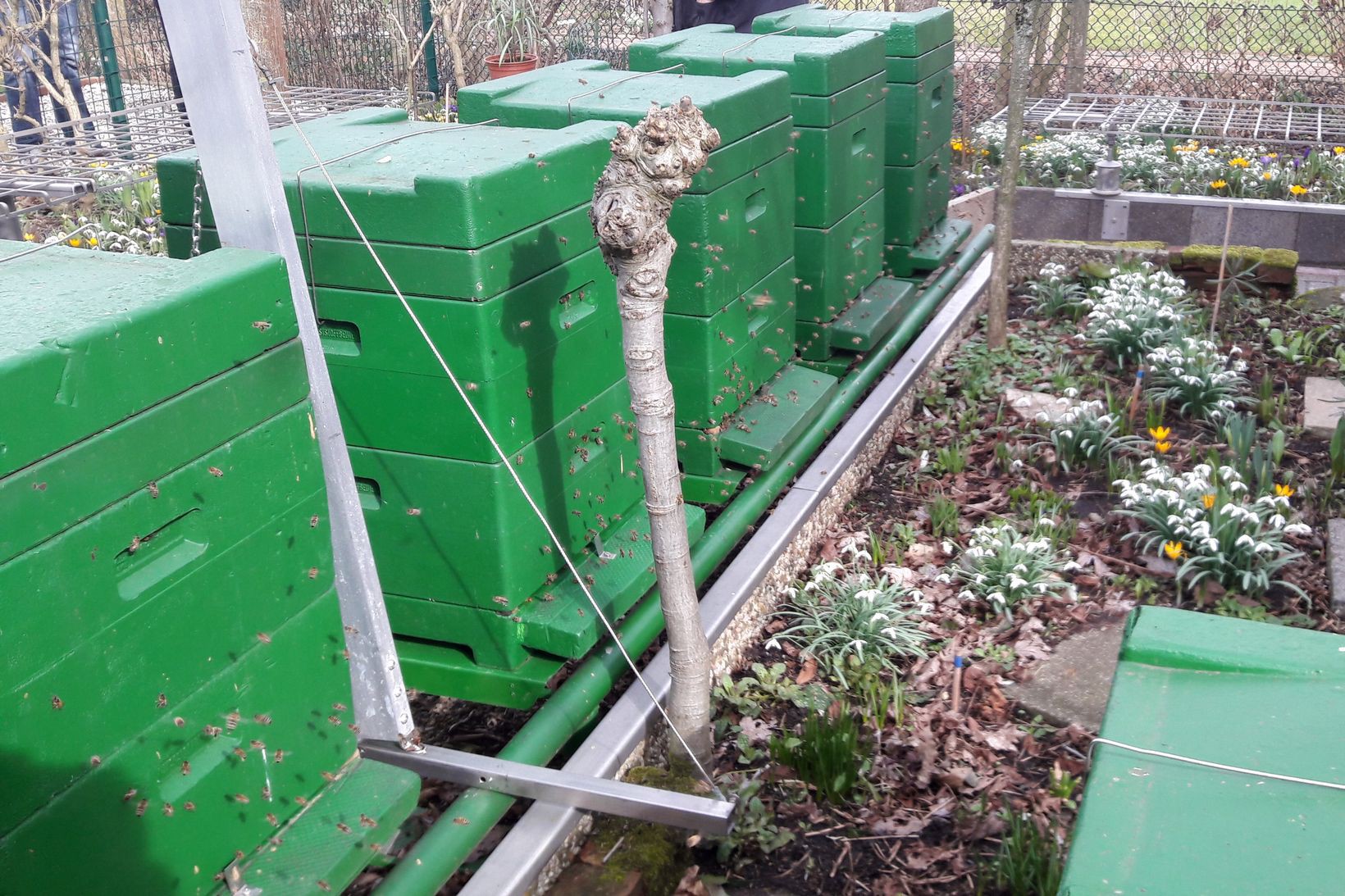Introduction
So, bees are fascinating creatures. They come in many sizes, colors and shapes. The ones I will get my data from are of the western honey bee variety.
Bees have many ways to cope with hot and cold climates and too high/low humidity. All these things have been researched extensively. But I'd love to record my own data from a live bee hive to see exactly what these smart critters do to keep a steady climate in their hive!
The hive
The hive itself starts from scratch in a few weeks. We take two brood combs from another hive and a few hundred bees and put them into a new box. A comb full of honey and an empty honeycomb, sprayed with water is added as well!
The rest of the box is left empty.
In the following days fascinating things will happen:
- the bees are going to raise a new queen, as they don't have one yet. This will take around three weeks. Food and water come from the honey combs and water comb. They don't have to leave the hive for that!
- the new queen leaves the hive to mate with one or more male bees. After that she will return to the hive (we hope she does!). This usually takes a few days
- meanwhile the rest of the bees hatches from their cells and begin working for the hive
The box itself is a Segeberger type made from styrofoam. They are painted on the outside in a non-toxic green color:

What data and positioning of the sensors
I'm going to track the following things:
- outside temperature (DS18B20)
- inside temperature between two combs (DS18B20)
- inside temperature at the entrance (DS18B20)
- humidity and temperature on top of the combs (Si7021)
Logging interval
Measurements are taken every 15 Minutes, resulting in 96 logs per day (24h) to create nice graphs. The system itself is quite "lagging". One won't see temperature or humidity jumping up and down by a few °C/%RH within minutes.
Data retention
Logs are stored in the Atmega328s EEPROM. The measurements are put into a human readable string together with a time stamp. When the EEPROM is full (holds 34 strings of 30 bytes), the log is written to the SD.
I use the EEPROMex librarys update function to keep wear aof the EEPROM low. The EEPROM is full every 8,5 hours, so in theory I get like 850000 hours (datasheet guarantees 100000 write cycles) before data retention is not guaranteed anymore.
This data can later be directly imported in Calc or whatever program (I think I'm going to use Kst...) and converted to a chart.
 Jan
Jan
Discussions
Become a Hackaday.io Member
Create an account to leave a comment. Already have an account? Log In.